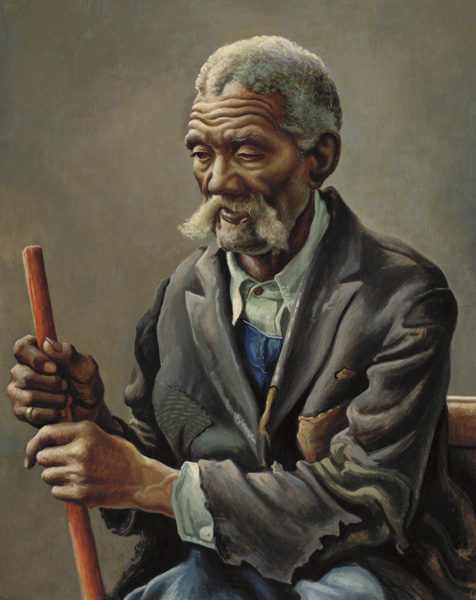
Aaron
Thomas Hart Benton
Named after a great-uncle who had been an early United States senator, Benton was born in Neosho, Missouri. Returning to America in 1912, he was unable to sell his European-inspired canvases, leading him to temporarily abandon painting to work as an architectural draftsman during World War I. After the war he began traveling throughout the United States, capturing his vision of the country’s different regions. Through his large murals, landscapes, and portraits, Benton gained national recognition, leading President Harry S. Truman to call him: “The best damned painter in America.” Benton taught for several years at the Art Students League, where he would influence a new generation of American artists, including Jackson Pollock.
Benton was the most prominent of the American Regionalists, a term that refers to a group of artists, including Grant Wood and John Steuart Curry, who depicted folk culture during the 1920s. In returning to his native roots, Benton developed an unpretentious realism, extolling the simple virtues of life in the American heartland. In “Aaron,” he depicts an elderly farmer with tattered clothes. Set against a neutral background, the subject’s face reveals the wear and tear of agrarian life, while Benton's populist visual language defines this work as thoroughly American.
Artist
Date of Birth
(1889-1975)
Date
1941
Medium
Oil and egg tempera on canvas, mounted on plywood
Dimensions
30 5/16 x 24 5/16 in. (76.99375 x 61.75375 cm.)
Accession #
1943.3
Credit Line
Joseph E. Temple Fund
Copyright
© T.H. and R.P. Benton Trusts / Licensed by Artists Rights Society (ARS), New York
Category
Subject
We're so excited you're planning to visit PAFA!
Make time for art — visit us Thursday to Sunday.
Before reserving your tickets, please review helpful information about museum hours, accessibility, building access, and special admission programs.
If you have any questions, feel free to reach out to us at visitorservices@pafa.org — we’d love to help!
![[Aaron]](/sites/default/files/artworkpics/1986_11_l.jpg)